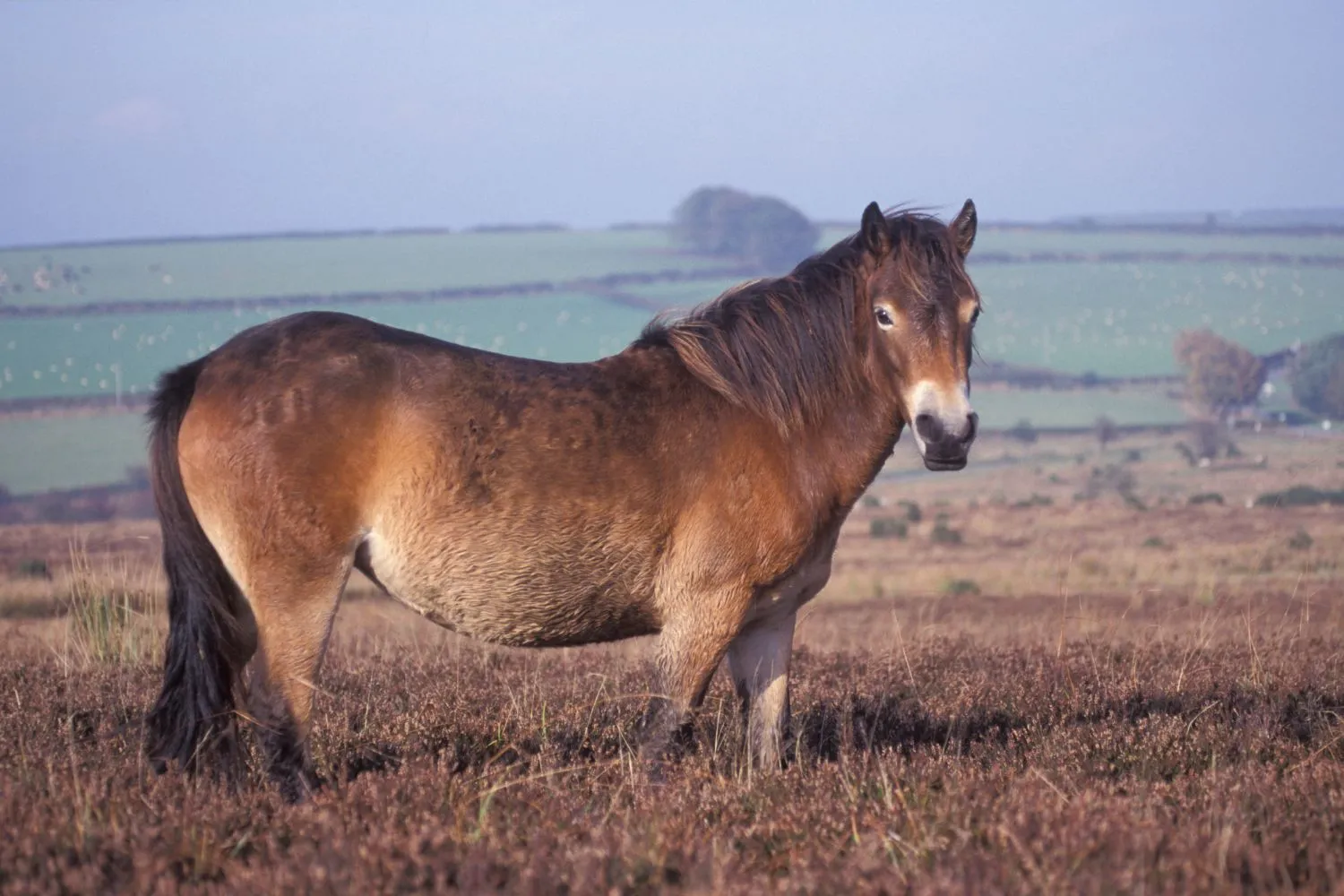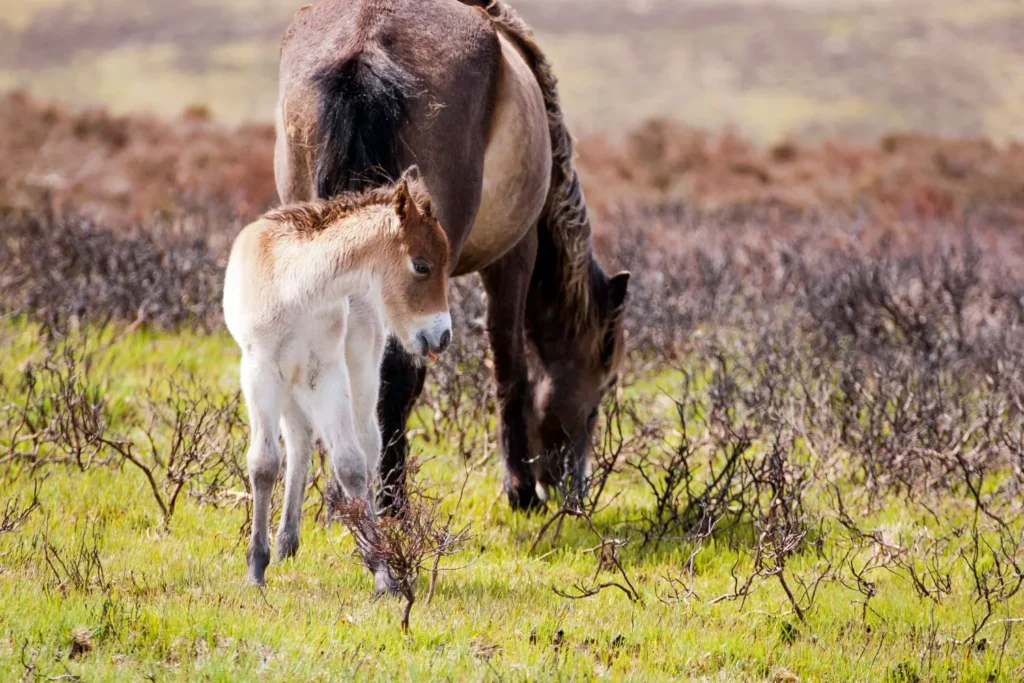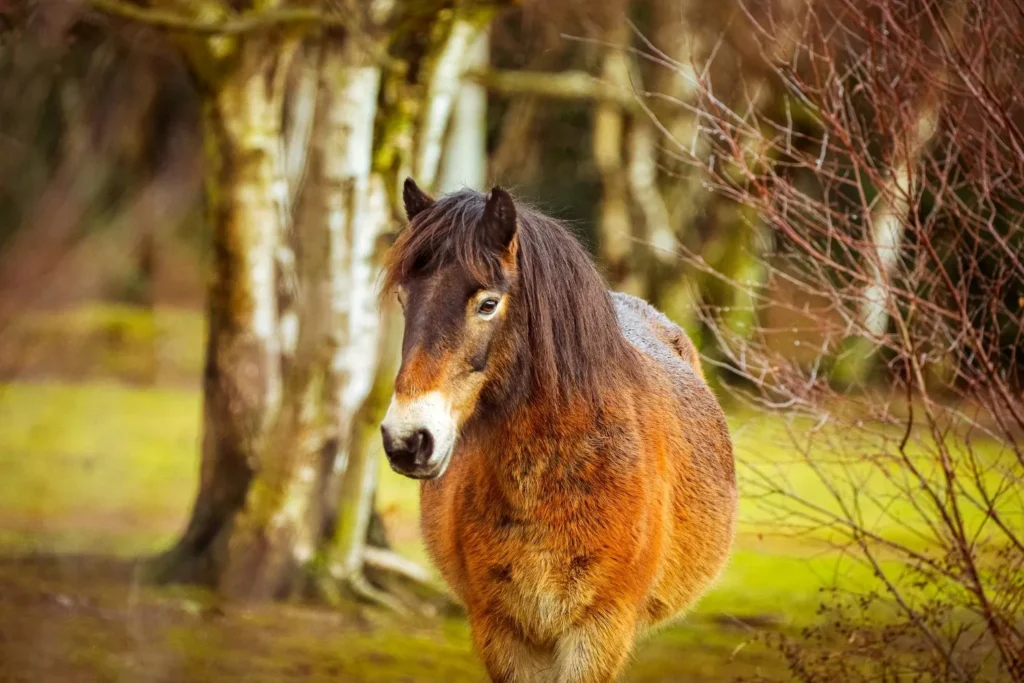Menu

This long-haired breed originates from the moorland around the northeastern Devon and western Somerset regions in England. It takes its name from the nearby River Exe. The breed descends from one of the horse's ancestors that crossed the Bering Strait from Alaska after the Ice Age, spreading to Europe and Asia's greener pastures. It seems to have found a comfortable home in England, as it is estimated to be one of the oldest and purest pony breeds in the world.
The breed was mentioned as early as 1086 in an official inventory of the king's properties. Back then, they belonged to an area used for hunting by the nobility. Since then, they have been used for everything from riding, cattle driving, farming, and due to their size, they were particularly good at pulling wagons in the coal mines. They have also occasionally been crossbred with English thoroughbreds to create a talented hunting horse.
Read also: Horse breed: Welsh pony and cob – small body, big personality
During World War II, the small, resilient breed nearly met a disastrous end. The population was at its very lowest number. British soldiers in the area hunted them for food, and the total number dropped to about 50 horses. In the post-war years, efforts to restore the population began, and although it is still considered endangered, there are now several charitable organizations working to preserve and promote the breed. On the moors of Exmoor, there are still semi-wild ponies that look after themselves - but most are bred on farms and private stud farms.
The Exmoor pony has several distinguishing features, many of which are associated with the wild horses of the past: physical traits that have been inherited from generations from the modern horse's predecessor. It is a self-sufficient breed, well-adapted to fend for itself throughout the year. This means that its appearance changes depending on when you see it.

In winter, the undercoat retains warmth. The longer, coarse hairs that make up the outer coat are water-resistant. For this reason, you can sometimes see an Exmoor with snow on its back - without any worries.
The head is sturdy with a broad forehead and characterised by toad-like eyelids that easily divert dirt and rainfall away from the large, attentive eyes. The ears are pointed and short and the muzzle has large nostrils, which help warm the cold air. The colour of the muzzle is mealy - sometimes also on the inside of the legs and on the belly.
The neck is dense and sturdy, and both the chest and hindquarters are proportionately strong. The legs are slender but powerful and well-formed. The hooves are small and very durable. An Exmoor pony is brown or reddish-brown with a black mane, forelock and tail. The height is typically between 125 to 130 cm.

Read also: Meet the small but cool Shetland pony
The Exmoor pony is often chosen when establishing free-ranging populations in fenced areas. In addition to their winter coats, they are good at finding food. Lately, they have been sent to the Czech Republic, Denmark and the Netherlands. Although these are not wild populations, they live outdoors most of the year. They have also found their place in Canada, after being introduced in the 1950s.
And they are not just survival and nature specialists. They are still ridden and driven, as they are popular for their endurance and are happy to cooperate. Do that, and the reward is a very independent and affectionate family pony.
SOURCES: https://www.thehorseguide.com/horse-breed-information/pony-breeds/exmoor-pony/, https://www.visit-exmoor.co.uk/attractions/exmoor-pony-centre, Esposito, L., (2005). ’HESTE, Illustreret Opslagsværk’. Briggs, P., 2. reviderede oplag, 1. udgave. Aktium.